A lot of talk can be made about how the season ended for the 2020-21 Pittsburgh Penguins, but there is one thing no one can take away from them. The team obtained a postseason berth for the 15th consecutive year.
Some professional athletes can go their entire career and never make the playoffs once, but veteran Penguins like Evgeni Malkin and Kris Letang have never missed. Captain Sidney Crosby only missed one time during his rookie season. While all three of these men have missed a playoff year due to injury, they were at least part of a team that kept the now 15- year streak alive.
Let’s not let the recent early exits take away from what an incredible feat this is for the franchise. Let’s strap in and take a dive into the history books to review each of the Penguins’ past 15 postseasons.
2007
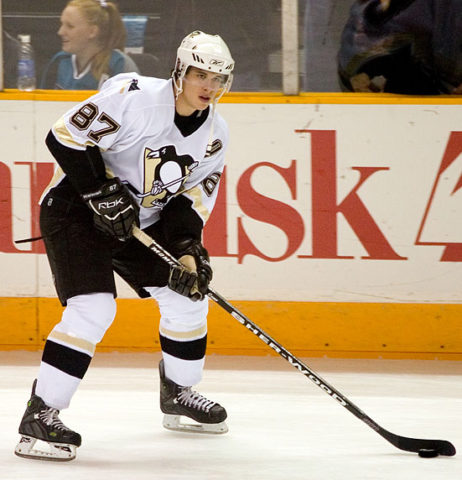
The future of the Penguins franchise was born in the 2006-07 NHL season when they were able to put together their top picks from the previous five drafts: Ryan Whitney fifth overall in 2002, Marc-Andre Fleury picked first overall in 2003, Malkin second overall in 2004, Crosby first in 2005, and Jordan Staal second in 2006.
The young Penguins were ready to take on the world and prove they were a team to be feared. They did so by piling up a 47-24-11 record for 105 points and finishing second in the Atlantic Division. After finishing last in their division in each of the four previous seasons, the Penguins made it back to the postseason and were set to take on the Ottawa Senators.
The Penguins were easily taken care of in five games by a Senators team that featured Daniel Alfredsson, Dany Heatley, and Jason Spezza on their way to a Stanley Cup Final appearance. Defeating a monster like that would have been a tall task for a young Penguins group, but they came back the next season stronger and with more purpose.
2008
If 2006-07 was the Penguins coming-out party, then the 2007-08 season was the dominant encore. They finished 47-27-8 for 102 points and first in the Atlantic Division. In his first year as captain, Crosby suffered a high ankle sprain and could only play 53 games. Malkin stepped up in Crosby’s absence and scored 106 points, including 47 goals. The team would only be bolstered at the trade deadline by picking up Marian Hossa from the Atlanta Thrashers.
Heading into the playoffs, the Penguins were again facing off against the Senators and the CASH Line in the first round; But it was Pittsburgh’s turn to be dominant. In a clean sweep, the Pens held the Sens to only five goals the entire series. Heatley, Spezza, and Alfredsson combined for only two assists, while Crosby himself had eight points.

The Penguins beat Jaromir Jagr and the New York Rangers in five games and ran through the Philadelphia Flyers in five to advance to the Cup Final. Quick fun fact about the Flyers team, it featured a current Penguins’ center Jeff Carter in his third season and Kasperi Kapanen’s father, Sami.
For the first time since 1992, the Penguins were back in the Stanley Cup Final and battled against the Presidents’ Trophy-winning Detroit Red Wings. Despite turning in a 4-2 series loss, the young Penguins team raised some eyebrows showing they were the real deal. They highlighted that by winning a wild Game 5 in triple overtime on the brink of elimination.
The Red Wings went into Game 5 up 3-1 in the series and were hungry to win the Cup at home at Joe Louis Arena. The Penguins included Fleury, who made 55 saves, and Petr Sykora, who called the game by telling Pierre McGuire that he scored the game-winner, then did it about halfway through the third overtime.
That was it for the Pens that run, however, as the Red Wings took Game 6 to win their franchise’s 11th Stanley Cup.
2009
Every Pens fan knows the story of the 2008-09 season: Hossa leaves to play in Detroit because he wanted to win a Cup. The team fired their head coach Michel Therrien to bring in Dan Bylsma. Some retooling was done to bring in a key piece for the playoffs (Bill Guerin) and a future first-line regular (Chris Kunitz).
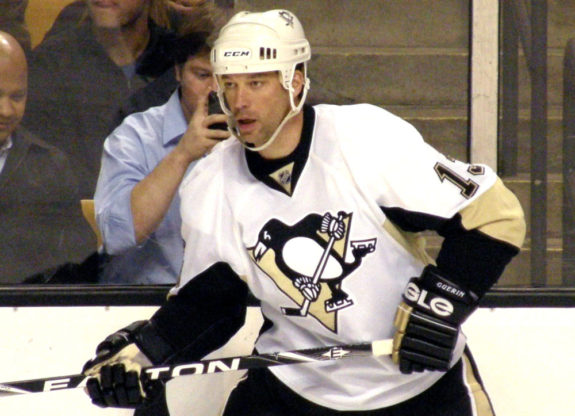
The first two rounds pitted the Penguins against a pair of arch-rivals in the Flyers and Washington Capitals. In the deciding Game 6 against the Flyers, the Pens found themselves down 3-0 early in the second period. Forward Max Talbot took it upon himself to swing the momentum and challenged Daniel Carcillo to a fight. After the fight, he famously “shushed” the Philadelphia crowd. The momentum swing worked, as Talbot’s teammates went on to score five goals to win 5-3 and take the series.
In the second round, the Crosby and the Penguins faced off against Alex Ovechkin and the Capitals for the first of many times in the duos’ Hall of Fame careers. After dropping the first two games, the Penguins rallied to take the series in seven games.
The battles of the 2009 postseason came to a head when the slate was set for a rematch of the previous season’s Final. It was again Red Wings versus Penguins, but both teams took on a different form. The most well-known change was Hossa joining Detroit rather than staying with Pittsburgh in an attempt to win a Cup. The Penguins looked to play spoiler for him and the Wings, and it took all seven games to do it.
In the deciding game of the final round, it was the same man who turned the tide in the deciding game of the first round. Talbot scores twice to give the Penguins a 2-1 victory and the franchise’s third Stanley Cup, the first in the Crosby/Malkin era.
2010
The Penguins went into the 2009-10 season looking to defend their title and close the doors on Civic Arena in grand style. Finishing the season with a 47-28-7 record for 101 points, the team finished second in the Atlantic Division and entered the playoffs looking to achieve their goals.
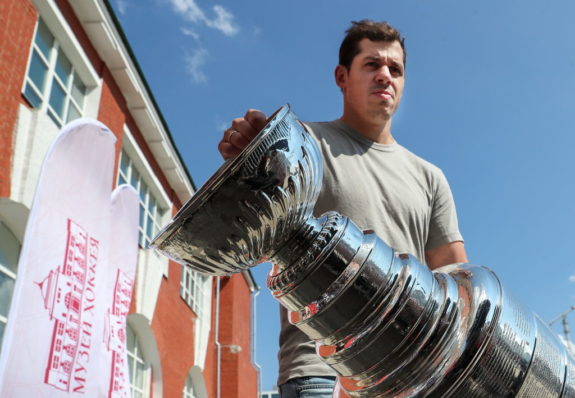
The Pens took on the Senators in an opening-round series for the third time in four seasons. After a triple-overtime in Game 5 and a deciding overtime period in Game 6, the Penguins picked up another series victory in six games. The Penguins moved on to play the Montreal Canadiens, who had just dispatched the Capitals in seven games.
For Pens and Caps fans, those series are known as when their teams got “Halak’ed.” In his second full season in the NHL, Jaroslav Halak backstopped the Habs to a pair of unlikely series victories. The Canadiens were the eighth seed heading into the postseason with 88 points and took down the Presidents’ Trophy winners in the Capitals with 121 points.
In their second-round series, the Pens and Habs traded wins until Game 7, when the Canadiens won the final game ever played at Civic/Mellon Arena. Halak stopped 203 of the 219 shots he faced for a .927 save percentage in seven games through the series.
2010 is the year that began what can be looked at as a “dark period” in Penguins playoff lore. Through the next five postseasons, the team won only three series.
2011
With a new building to call home, the Penguins aimed to reclaim their spot on hockey’s mountaintop. The 2010-11 season saw major bumps in the road for the team. In the midst of playing the best hockey of his career, Crosby suffered a concussion that forced him to miss the remainder of the season and bleed into the next. Malkin missed the back half of the season with an ankle injury. Despite missing their top two stars, the Penguins drove into the playoffs as the four seed in the East.
The Penguins lost in the first round to the Tampa Bay Lightning in seven games, and this short run is often looked at as the year Staal had to play as the No. 1 center. People often forget, however, that the team blew a 3-1 series lead.
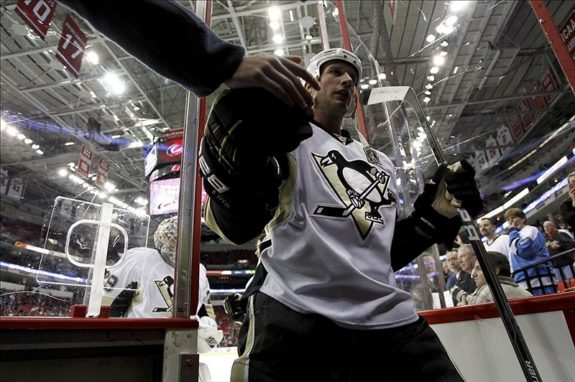
Maybe if the Pens had Malkin and/or Crosby in the lineup, things could have been different. But that’s the way the year went, and it was still impressive to see the team play well even without the two-headed monster. Without those injuries, maybe the front office doesn’t make a move to bring in James Neal or the disappointing return of Alex Kovalev.
2012
Ready for mayhem? That was the name of the game during the 2012 opening-round series against the Flyers. A series that saw 312 penalty minutes (PIMs) and 56 goals between the two teams in six games. That’s an average of 52 PIMs and 9.33 goals in each game. That was the style this particular Pittsburgh team played, as they were a bulky hard-hitting team that can also score a truckload of goals. The Flyers, though, played the same style but had a bit more edge. Their edge showed in this series as they dominated almost every game.
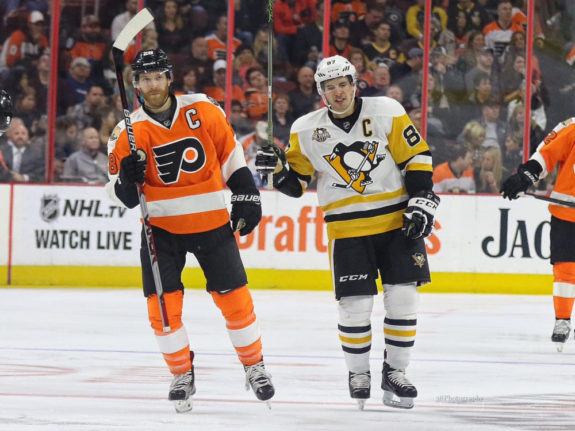
There was next to nothing positive for the Penguins to fall back on after the series. Maybe the fact that they avoided a sweep and forced six games after starting the series down 3-0. Despite giving up 16 goals in Games 2 and 3, they avoided the sweep by putting up a 10 spot in Philadelphia in Game 4.
What made it worse for Pens fans was watching two franchise heroes in Jagr and Talbot win the series wearing orange and black.
2013
While the “dark period” raged on, the 2012-13 season looked like there was a light at the end of the tunnel. Then general manager Ray Shero made some big moves, like acquiring Jarome Iginla at the trade deadline, putting the Penguins in the driver’s seat as favorites to win the Cup. Finishing the shortened season with a 36-12-0 record for 72 points, they were good for first in the Eastern Conference and second in the league.
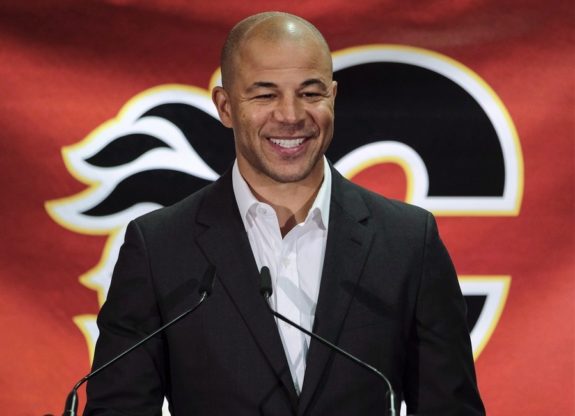
The 2013 postseason started strong: A six-game series win over the New York Islanders that saw a series-winning goal in overtime from Brooks Orpik. Then another series against the Senators in which the Penguins dominated in five games. Then there was the Eastern Conference Finals.
Through the first two rounds, the Penguins were putting up huge goal numbers. 47 goals through the first 11 games heading into the third round where things went downhill fast. The Boston Bruins swept the Penguins out in four games and held them to two goals the entire series.
What could have been a glorious run for another Stanley Cup with a team built to win fell flat when it mattered most. And the “dark period” continues.
2014
2012-13 showed that there could be an end to the darkness, but the following season turned up more disappointments. Sure the team finished first in the new Metropolitan Division, but it was that year’s playoffs that exposed their warts.
You have to remember that Fleury was not in net for much of the 2013 playoff run, it was veteran Tomas Vokoun. With Vokoun forced into early retirement due to health reasons, all eyes were on Fleury to rebound and improve his play during the postseason. It seemed like he was up for the challenge, as the Penguins opened up against the Columbus Blue Jackets in their second-ever postseason appearance.
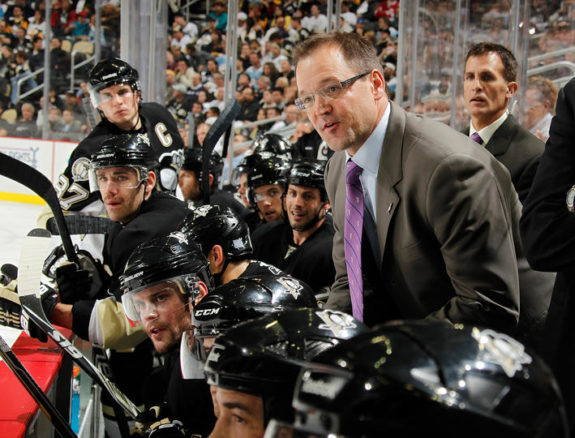
Fleury and the Penguins handled the Jackets in six games and went up 3-1 in the second round against the Rangers. To that point, Flower seemed to have found his playoff groove and returned to his Hall of Fame form. Standing with a 7-3 record, including two shutouts, he had a .922 SV%, and the Pens were a win away from their second straight Eastern Conference Finals appearance.
That’s when the wheels fell off. After losing the next three to the Rangers, a lot of changes were made that offseason. Both GM Shero and head coach Bylsma were fired shortly after the season ended. Jim Rutherford was hired as the new GM, and he chose Mike Johnston to be the head coach.
2015
Of the 15-year run, the 2014-15 season and its postseason has to be the worst by far. Had it not been for a two-goal performance from Brandon Sutter in the last game of the season, the playoff streak could have ended at eight years. But the Penguins survived and so did the streak to reach nine years.
The poor regular season got what it deserved and that was a poor playoff run. Getting ousted by the Rangers in five games, the Penguins again failed to find the back of the net, having only one multi-goal game.
After a full season with the team, Rutherford knew how he wanted to rebuild the Penguins and return them to championship form. Little did fans know, the next chance was right around the corner.
2016
Before the start of the 2015-16 season, Rutherford made moves that focused on putting together the best team possible. That all started with trading for Phil Kessel to bring a new scoring threat.
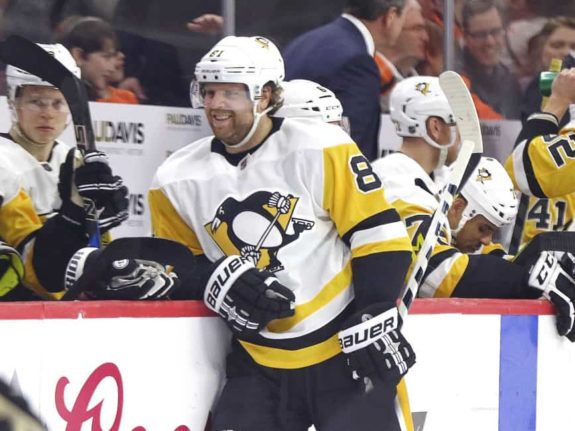
As the season went on, things were still stale on the ice, so another move had to be made. This time it was to the coaching staff. Johnston was fired and replaced with Mike Sullivan, who was coaching the Wilkes-Barre/Scranton Penguins. And thanks to Sullivan’s AHL influence, a few key call-ups were made. Goalie Matt Murray and forwards Conor Sheary and Bryan Rust were all given the call and proved to be solid contributors in the playoffs.
After a 48-26-8 season, the Penguins were set to take on the Rangers in the postseason for the third year in a row. This time, it was all Penguins, knocking out the Blue Shirts in five games. The Penguins carried that momentum past the Capitals in six games in the second round, where the famed HBK line first made its mark. Carl Hagelin, Nick Bonino, and Kessel scored with seven, five, and six points, respectively.
The Penguins mounted a seven-game series win over the Lightning to advance to the 2016 Cup Final against the San Jose Sharks. The Penguins, in six games, ended their “dark period” with the franchise’s fourth Cup, the second in the Crosby/Malkin era. They weren’t done just yet.
2017
There was something different about the 2016-17 Penguins team. Ironically it had mostly the same makeup, but they seemed to be playing with another gear. Crosby himself had an absurd amount of determination to make the Penguins the first team in almost 20 years to win back-to-back Cups.
Before starting the playoffs, the team found out that they would continue to be without Letang, who needed time to recover from a neck injury. He had already been out since late February. Then during warmups before Game 1 against the Blue Jackets, Murray went down with an injury, forcing the starting job on Fleury, who would be giving his final ride as a Penguin.
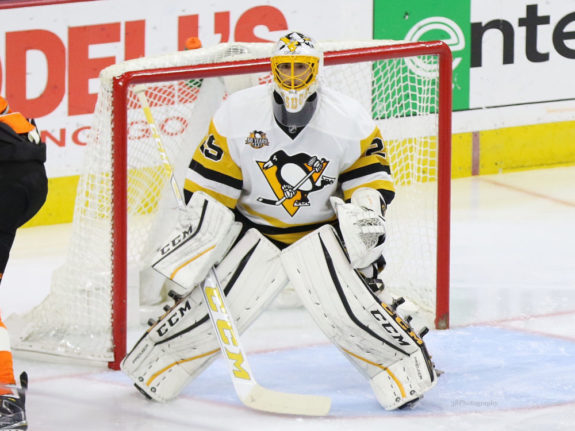
Fleury turned his troublesome postseason play around and became unbeatable. He led the Pens to the Eastern Conference Finals past the Jackets in five games and the Capitals, yet again, in seven games. Murray returned to health and served as the backup until Fleury’s game began to falter a few games into the Eastern Conference Finals against the Senators.
This series not only went the distance but needed two overtimes in the seventh game. In that second OT period, Kunitz left his lasting mark in Penguins franchise lore as he scored the goal that pushed the Pens back to the Stanley Cup Final. Even more poetic, that was the last goal he ever scored in a Penguins uniform.
The 2017 final stage was set with the Penguins taking on the unlikely Nashville Predators. They were the lowest seed in the playoffs and showed they deserved to be there by sweeping the Chicago Blackhawks in the opening round. The Penguins had a hard task but were up to the challenge, winning the series in six games for their fifth Cup. The third in the Crosby/Malkin era and the first team to win two consecutive cups since the 1997-1998 Red Wings.
2018
After becoming the first team in the salary cap era to win back-to-back Cups, the Penguins looked to three-peat as champions and had a pretty good opportunity to do it. They wrapped up the regular season with a 47-29-6 record set to take on the Flyers in the opening round. It sure became a round to remember, mostly considering how the past few years have gone.
The Penguins beat the Flyers in six games, but it had the feeling of a five-game victory or even a clean sweep if you look at the numbers. The Penguins outscored the Flyers 28-15, and Murray was able to slam the door shut and record two shutouts. Crosby and Guentzel led the series in every scoring category with six goals and seven assists for 13 points.
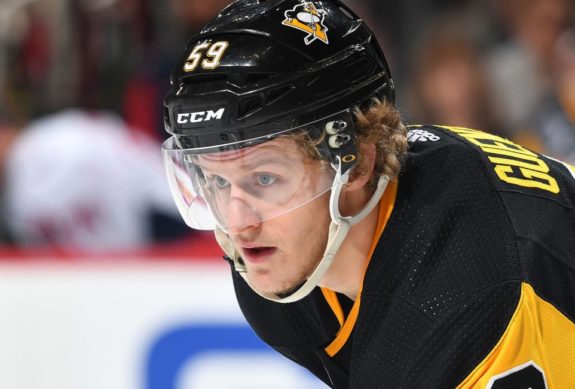
This was and still is, the last playoff series the Penguins took home a victory in. They moved on to play the Capitals in another second-round series. Washington finally exercised their demons and defeated the Penguins en route to a well-deserved first Stanley Cup in franchise history.
2019
After a pretty average regular season for Penguins standards (44-26-12), they entered the playoffs for the 13thconsecutive year, hoping to bounce back as Cup contenders. That didn’t even come close to happening. For the first time since 1972, the Penguins entered and exited the playoffs without recording a win.
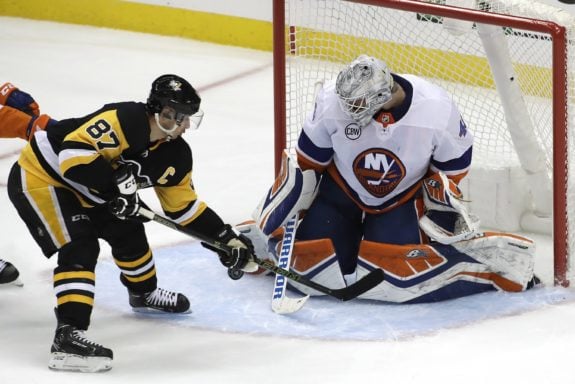
The Islanders swarmed the Penguins and put them out of their misery in a four-game sweep. The Barry Trotz system of a defensive-minded game and not taking many chances to attacked worked to perfection. There isn’t much else to say, it was an awful series for the Penguins.
2020
The infamous 2019-20 NHL season. The COVID-19 pandemic forced all sports to go on hiatus, cutting the NHL season short and forcing an unprecedented new format for the 2020 Playoffs. 24 teams competed in one of two bubbles for their chance to win it all, and the Penguins were pitted up against the Eastern Conference’s 24th seed, the Montreal Canadiens.
So the Penguins seemed shaky heading into the long break, but they were a good 5 seed facing the last team to qualify, thanks to winning percentage. The Habs, being a severe underdog, pulled out a 3 games to 1 series victory and advanced to the first round of the 2020 Playoffs. The official title to the opening series of the 2020 postseason was the NHL Qualifying Round, not the playoffs, making the Penguins streak a little confusing.
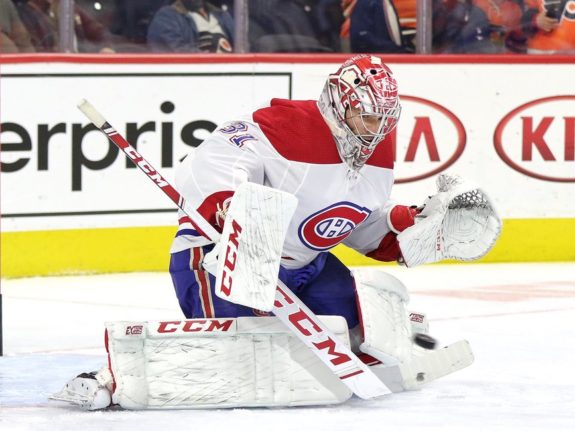
Regardless of technicalities, the player statistics from that round were recorded as playoff points, and the games were considered postseason games, meaning the Penguins streak would have to be considered a postseason streak rather than a playoff streak. Either way, it reached 14 seasons in 2020.
2021
We all know this story, it’s the one that was just told to us. The pandemic lingered on, forcing a restructuring of the divisions for a year. The Mass Mutual East Division, where the Penguins landed, was looking to be one of, if not the hardest division in the league. Crosby and the Pens were counted out from the beginning, many saying that was it for the playoff streak and maybe the end of the core being together.
Early on, that seemed to be the case. They weren’t getting multi-goal wins, the injury issues piled up, Rutherford quit on the team. But somehow, the team rallied, found new ways to win and finished the 56-game season 37-16-3, first in the East.
You may also like:
- Penguins’ Kyle Dubas Already on the Hot Seat This Season
- 4 Things Patrick Roy Can Learn From Jon Cooper & Mike Sullivan
- Pittsburgh Penguins’ 10 Best Defensemen in Team History
- Hockey History – the NHL “Second Six”
- Penguins’ Projected 2024-25 Opening Night Lineup
Going into the playoffs, the Penguins seemed like solid contenders. The inclusion of Carter at center helped reinforce depth scoring. Facing off against the Islanders in the opening round, the Penguins looked like the better team. There was one fatal flaw, though. Tristan Jarry, in his first season as the full-time starting goalie, let them down.
You have to give the Islanders credit for sticking to their game plan and taking the series in six games, but they definitely didn’t look like the better team in most games. Ilya Sorokin stole a few games as the Isles’ goalie, and Jarry coughed up a few himself.
Whether times are tough right now or not, the Penguins have achieved something not many teams across all sports are able to do. A decade and a half of postseason appearances and multiple championships to boot is an accomplishment that deserves to be remembered and talked about in higher regard. As it stands, it is the longest active postseason streak in not just the NHL but in all North American sports. There have been some bad runs, but the team is still one of the best every year and this streak proves it.
The players, coaching staff, and front office have seen many changes in the past 15 years, but there as always been a few constants. The presence of the core, Crosby, Malkin, Letang; And for the most part, Kunitz and Fleury. Without them, who knows what this team would look like and where they would be. It probably wouldn’t be Pittsburgh.
Does this core still have a chance to win it all again? Only time will tell, but there is no denying the work they’ve done for the past 15 seasons, and more importantly, three championships.